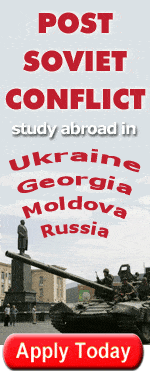The European continent is diverse. Many of its countries, though smaller than many US states, can be further broken into regions that differ from each other in dominant culture, dialect, and even language.

During the Cold War, Europe was generally divided into western and eastern portions which corresponded to the geographies of capitalist and communist societies. Since the fall of the USSR, however, rapid changes, particularly in the eastern half of the continent, have created new identities as well as new trade, political, and military alliances.
Western Europe can be generally considered to be that portion of Europe which remained outside of communist control. Some difficulties in this include the fact that competition for control of some countries remained intense. Germany was once divided into communist and non-communist parts, as was Austria (from 1945 to 1955, while under Allied occupation). Greece’s civil war in the 1950s was fought between capitalist and communist forces, backed by eastern and western powers. Germany and Austria are relatively safely included in “the West” because, when they reunited (in 1990 and 1955, respectively), they immediately faced West in their policy formations. Greece is generally included as it is considered the birthplace of democracy and other elements of Western culture. However, Greece is also considered part of the Balkans, a much more complicated landmass, and Greece’s tenuous attachment to Western Europe is also shown in the current debate of whether it should leave the EU and its recent election of a government that is openly promoting ties with Russia. In addition, this says nothing of other debates that, for example, Scandinavia (Sweden, Norway, Finland, and Denmark), with its unique histories and largely separate landmasses, should be considered a separate division as well.
The Baltics are three countries (Estonia, Latvia, and Lithuania) that share more in common culturally and historically with Scandinavia and Central Europe than what they share with Eastern Europe. These countries integrated rapidly into Western institutions such as the EU and NATO, and rapidly reformed their economies and government institutions after declaring independence from the USSR. Almost immediately, they shed any status as “Eastern European” and became much more widely known as an independent grouping.
Central Europe can be considered a newer division – although it has its historical roots as well. From Google’s Ngram viewer, we can see that interest in the term skyrocketed in the 1920s as European powers vied for influence after WWI. Then interest waned rapidly, reviving after 1980 as resistance to communist rule mounted in Central Europe. These countries were often considered a “second wave” of additions to the Western European fold – those in which European-style economic and political reforms were taking slightly longer than in the Baltics, but which were more rapid and pronounced than those in Eastern European or Balkan countries. Central Europe has integrated more heavily with the EU, and particularly with the Baltics through efforts led in large part by Poland. One additional point of contention in the grouping is weather to include Germany, which has had strong influence and geographic connections to many Central European states, and which once partly lived under communist rule, and is sometimes therefore included as part of Central Europe. Central Europe also remains, in large part, distinct from Western Europe – with populations that are much more socially conservative population than Western Europe, and governments that tend to be more centralized. Central Europe is also not entirely united – Poland has retained a staunchly anti-Russia foreign policy while Hungry remains one of Russia’s biggest allies within the EU.

Eastern Europe is generally those countries in which Russian and/or Communist influence is still strong. Until recently, this grouping was relatively solid. However, Ukraine recently lost control of territory where many its ethnic Russians reside after the Maidan revolution displaced the ostensibly pro-Russian government with one that tried to face decidedly westward and focus on a more ethnically Ukrainian identity at the expense of ethnically Russian groups. Moldova also has a separatist Russian-speaking and Russian-supported province and the Communist party continues to hold about half the country’s freely elected parliament. Belarus has long been considered a historical partner of Russia, although it too has occasionally sought ties with Europe, particularly when looking for improved bargaining positions with Russia.
Still other terms in use include “Central and Eastern Europe” or “Central East Europe” which often seek to resolve the differences between various countries included in the Baltic, Central, and Eastern European groupings via other criteria.



